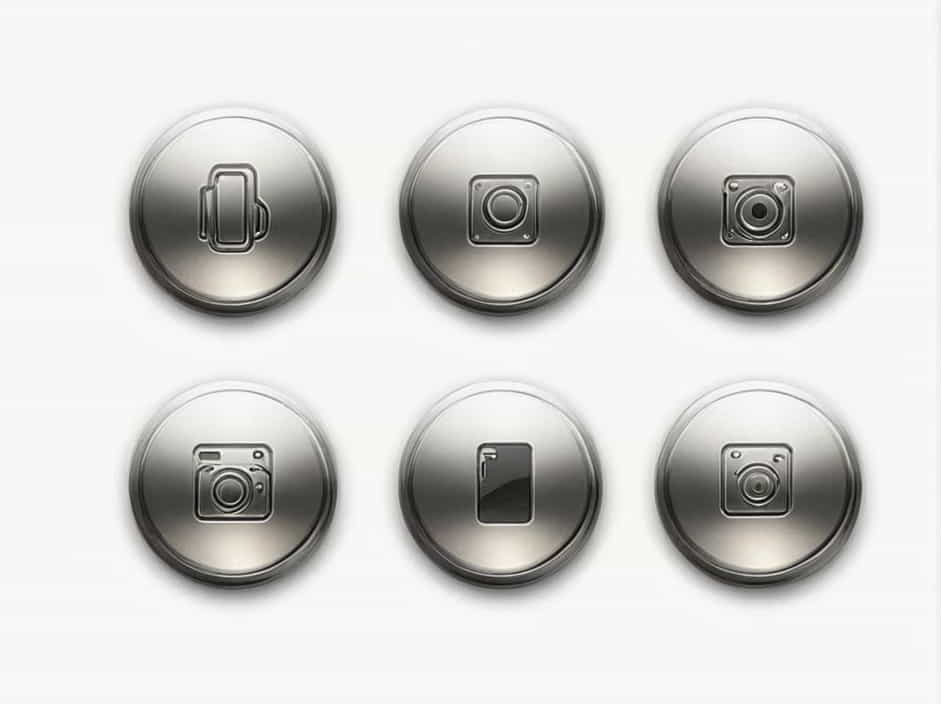Tin plating is a widely used metal coating process that enhances the durability, conductivity, and corrosion resistance of various products. From food packaging to electronics, tin plating plays an essential role in everyday life.
This topic explores the applications, benefits, and importance of tin plating in different industries and household products.
What is Tin Plating?
Tin plating is a metal finishing process where a thin layer of tin (Sn) is applied to the surface of another metal, such as steel, copper, or aluminum. The process is mainly performed using electroplating or hot-dip methods.
Key Properties of Tin Plating
- Corrosion resistance – Protects metals from rust and oxidation.
- Non-toxic and food-safe – Used in food packaging.
- Excellent conductivity – Ideal for electrical and electronic components.
- Solderability – Enhances the ability to join metal parts easily.
Due to these properties, tin plating is a cost-effective and reliable solution for many industries.
Common Uses of Tin Plating in Daily Life
Tin plating is used in various applications, from kitchenware to industrial equipment. Here are some of the most common everyday uses:
1. Food Packaging and Containers
One of the most recognizable uses of tin plating is in food cans and storage containers.
- Tin-coated steel cans are widely used for preserving food and beverages because tin is non-toxic and does not react with acidic foods.
- Milk powder, canned vegetables, and baby formula are often packaged in tin-plated containers.
- Tin-plated utensils and cookware provide a safe, rust-resistant surface for food preparation.
2. Electronics and Electrical Components
Tin is an excellent conductor of electricity, making it essential in the electronics industry.
- Printed circuit boards (PCBs) use tin plating to enhance electrical conductivity.
- Connector pins and terminals are tin-plated to prevent oxidation and improve performance.
- Wires and cables are coated with tin to protect against corrosion, especially in humid environments.
3. Automotive Industry
Tin plating is used in car manufacturing to improve durability and performance.
- Battery terminals are tin-plated to enhance conductivity and prevent corrosion.
- Fuel lines and brake components benefit from tin plating for better resistance to moisture and chemicals.
- Electronic sensors and connectors in vehicles rely on tin plating for long-term reliability.
4. Plumbing and Water Pipes
Tin-plated pipes and fittings are commonly used in water supply systems because they are safe for drinking water and resist corrosion.
- Lead-free tin coatings are used in modern plumbing to comply with health and safety standards.
- Brass and copper fittings are often tin-plated to extend their lifespan and maintain water purity.
5. Jewelry and Decorative Items
Tin plating is widely used in fashion accessories and home décor to provide a shiny, silver-like appearance at a lower cost.
- Costume jewelry often features tin-plated components to prevent tarnishing.
- Picture frames, buttons, and decorative objects use tin plating for an attractive, durable finish.
- Musical instruments, such as brass trumpets, may have tin-plated parts for improved durability and aesthetic appeal.
6. Aerospace and Military Applications
Tin plating is also crucial in high-performance industries like aerospace and defense.
- Aircraft components are tin-plated to withstand extreme conditions.
- Military-grade electrical connectors rely on tin plating for strong conductivity and durability.
- Satellite systems use tin-plated parts to resist oxidation in harsh space environments.
Benefits of Tin Plating
Tin plating offers numerous advantages, making it a preferred choice in many industries.
1. Corrosion Resistance
Tin forms a protective barrier that prevents rust and oxidation, increasing the lifespan of metal products.
2. Food Safety
Unlike other metal coatings, tin is non-toxic and does not react with acidic foods, making it perfect for food storage and preparation.
3. Electrical Conductivity
Tin enhances electrical conductivity, making it essential for wires, circuit boards, and connectors.
4. Cost-Effectiveness
Tin plating provides a cheaper alternative to silver or gold plating while maintaining excellent performance.
5. Improved Solderability
Tin-plated surfaces are easier to solder, making them ideal for electronics and plumbing applications.
6. Eco-Friendly and Recyclable
Tin is a recyclable material, contributing to sustainability in manufacturing and waste reduction.
How is Tin Plating Applied?
Tin plating can be done using different techniques, depending on the intended application.
1. Electroplating
- The most common method used in electronics and small components.
- A thin layer of tin is deposited onto the metal surface using an electric current.
2. Hot-Dip Tin Plating
- The metal part is immersed in molten tin, creating a thicker, more durable coating.
- Used in food cans, pipes, and industrial machinery.
3. Mechanical Plating
- Metal parts are tumbled with tin powder and special chemicals to create a plated surface.
- Used for fasteners, bolts, and small automotive parts.
Challenges of Tin Plating
While tin plating has many advantages, it also comes with some challenges:
1. Tin Whiskers
- Small hair-like growths can form on tin-plated surfaces over time, which may cause short circuits in electronics.
- Mitigated by adding small amounts of lead (though lead-free alternatives are preferred).
2. Wear and Scratches
- Tin is a soft metal, making it prone to scratches in high-friction applications.
- Some industries use additional coatings to improve durability.
3. High Demand and Cost Fluctuations
- The global demand for tin can lead to price variations, affecting industries that rely on tin plating.
Future of Tin Plating
With advancements in nanotechnology and eco-friendly alternatives, tin plating continues to evolve.
- Lead-free tin alloys are becoming more common in electronics and plumbing.
- Self-healing tin coatings are being developed to reduce oxidation and wear.
- Recycled tin is being used to promote sustainability in manufacturing and packaging.
Tin plating is a versatile and essential process used in various industries, from food packaging and electronics to automotive and aerospace applications. Its corrosion resistance, food safety, and electrical conductivity make it a valuable material in everyday life.
As industries continue to innovate and improve tin plating techniques, it will remain a critical component in modern technology, sustainability, and manufacturing.
